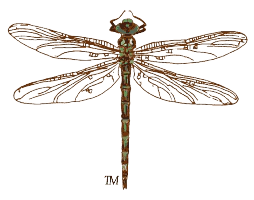About the Cover…
Spring Monarchs on the Move
Photos courtesy Betsy Cross
Betsy Cross
Have you ever looked closely at the first monarch butterflies that arrive in the Texas Hill Country in late March or early April? Maybe they were just a little too fast-flying for you to see them clearly. They do that.
But if a spring monarch happens to land on a blooming antelope horns milkweed, the larval host plant of the monarch caterpillar and a favorite nectar food of the adult—as here in our cover photo and in the pictures below—take your time or grab a photo to get a really good look.
The monarch pictured here is in exceptionally good physical condition for an insect who made a 3,000-mile journey last fall from its birthplace in the northern United States or southern Canada to its overwintering grounds in Mexico, a place it has never been before, and now has arrived back in the Texas Hill Country to fulfill its ultimate purpose.
If you take a closer look at this individual, you will notice its tissue thin wings, jagged or broken wing edges, and its faded color, all characteristics of spring migrants.
Jacob's Well Natural Area (April 12, 2020)
This one’s a male monarch butterfly. How do I know that? See the two small symmetrical raised spots in the black veining on the top surface of the hind wings? These spots are filled with pheromones, chemical signals that attract a female. An even more subtle gender marker is that males have slightly thinner wing veining than females.
These special “fifth generation” monarchs carry the genes of this year’s first generation caterpillars. And after mating with a female, who has also made this incredible migratory journey, the species’ life cycle starts all over again right here in Texas.
“Without milkweed, monarch butterflies would cease to exist.”
—Monika Maeckle, The Butterfly Migration—Its Rise and Fall
In early April, a patch of antelope horns milkweed at Jacob’s Well Natural Area in Wimberley, Texas, is in full bloom. We can’t overemphasize the importance of this native host plant to support the start of this year’s monarch population and to sustain the monarch’s first leg of its migration north.
Monarch Life Cycle: Caterpillar, Chrysalis, Adult
The deeper mystery is their complicated life of intercontinental migration—and a life cycle that is stranger than strange: metamorphosis! It means a change of form. Talk about change! Just look at it:
A fifth generation female monarch gently curves her abdomen up and deposits a single cream-colored egg on the underside of a milkweed leaf at Jacob’s Well Natural Area (April 3). She will lay an average of 700 eggs, one at a time, on milkweed plants.
Soon after laying her eggs, the female monarch will die. The egg is no bigger than the head of a pin. In just a few days, a tiny caterpillar will emerge, consume its egg case, and begin to eat the milkweed leaf.
A monarch caterpillar chows down on the leaves of the milkweed for 10-14 days. It will outgrow, shed, and replace its yellow, black, and white striped skin five times, until finally it is internally prompted to the next phase of its existence.
The Magic of Metamorphosis!
6:25 p.m.
9:50 p.m.
9:51 p.m.
9:53 p.m.
11:11 p.m.
+ 5 days later 9:54 a.m.
Inside another mature, translucent chrysalis, a monarch is head down and only seconds away from emerging.
On a third chrysalis, at Jacob’s Well (May 3), this monarch has just hatched on a native Mexican hat plant. It will hang here for an hour or more to dry its wings.
Once a monarch’s wings are completely dry, it flies off to find a nectar source, such as this native mealy blue sage. Notice how fresh and brilliantly colored this newly hatched “gen one” monarch is compared to its fifth generation parents.
Maeckle continues in her book, The Monarch Butterfly Migration—Its Rise and Fall:
These first-borns continue the cycle, mate, search for host plants and follow the milkweeds north. By late spring and into the summer, monarch butterflies east of the Rocky Mountains arrive in their primary breeding grounds in the midwestern United States. This is where the migrating monarch butterfly population multiplies. …By the summer solstice in mid-June with days at their longest, monarchs are in prime reproduction mode.
They continue this rhythm, what Cornell University ecologist Anurag Agrawal calls “waiting, mating and migrating,” through the summer. They arrive in southern Canada, the farthest reach of their range, in late August and early September. Then, around the fall equinox in mid-September, millions and millions of monarch butterflies east of the Rocky Mountains make a big life cycle change. From Toronto to Texas, most stop having sex and head to Mexico. …
The fact that no single butterfly makes this epic round-trip is unique in nature. The monarch butterfly that arrives in Michoacan around the Dia de los Muertos (Day of the Dead) in early November has never pumped its wings anywhere near this part of the world. The completion of a three-thousand-mile journey with no guidance from elders or familiarity with their destination contributes to our fascination with the species.
It also remains a scientific puzzle. How do they find their way? Using their sun compass and internal body clock? Magnetic fields? Following a pheromone trail left by those that preceded them on the journey? This mystery has intrigued scientists and enthusiasts for decades and motivated the “discovery” of the monarch butterfly roosting sites in 1975.
Monika Maeckle presented at the October 2024 Annual Meeting of Texas Master Naturalist™ hosted by the Hays County Master Naturalist Chapter in San Marcos, Texas.


